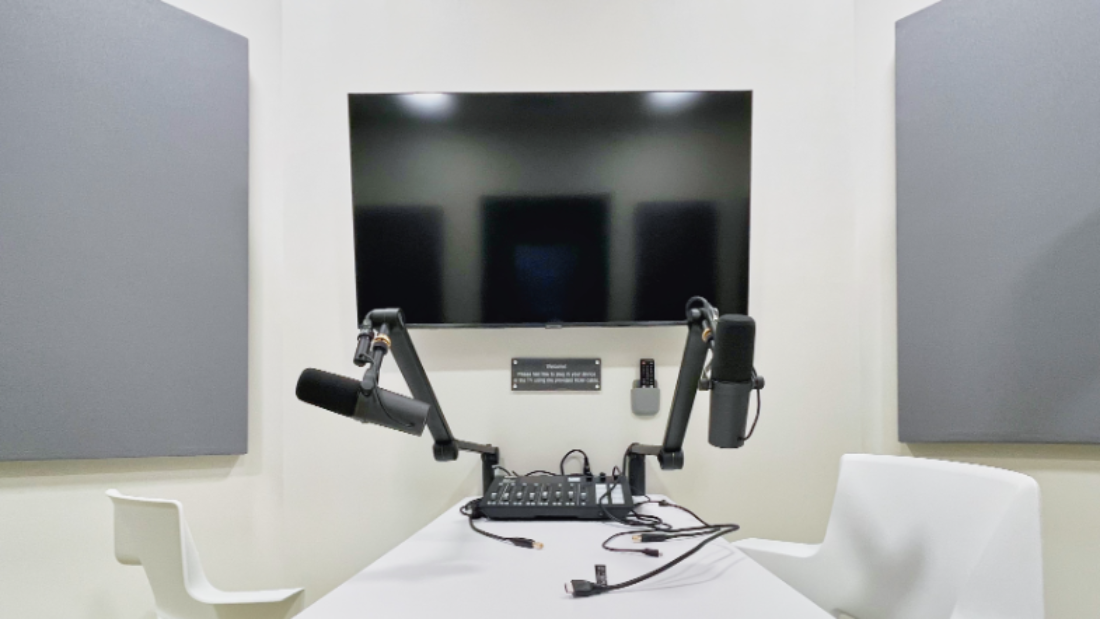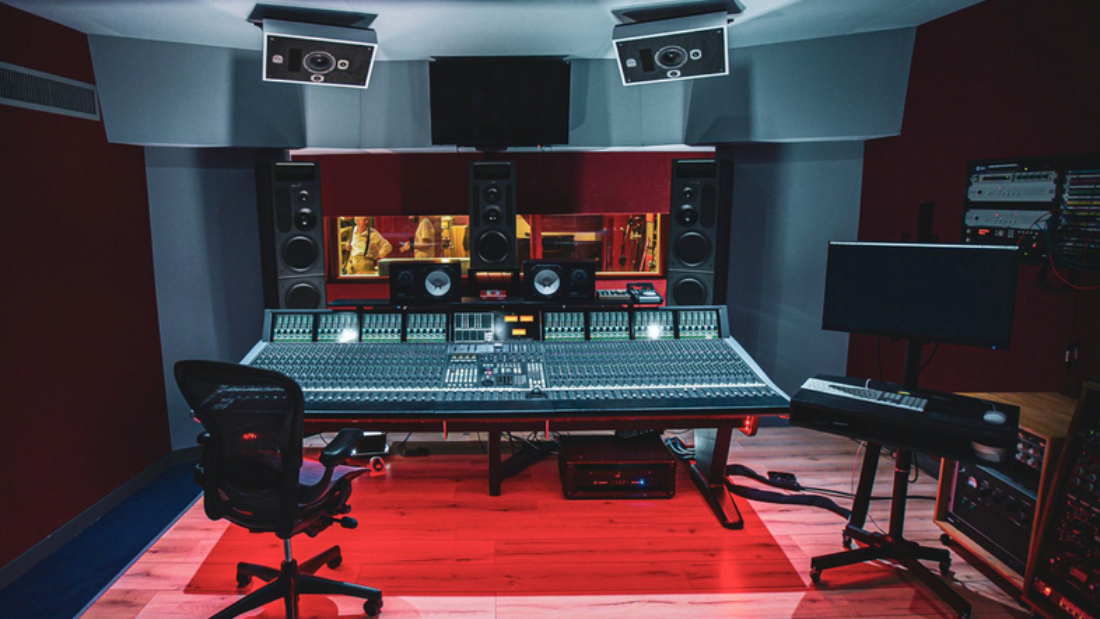Booking a recording studio is an exciting step for any musician, podcaster, or audio professional. However, with so many options available, it’s essential to consider the amenities offered by each studio to ensure that it meets your needs and preferences. Here’s a detailed guide on what to look for when booking recording space.

1. Acoustic Treatment
Acoustic treatment plays a pivotal role in ensuring that the recordings produced in a studio meet professional standards of quality. It involves the strategic placement of specialized materials designed to manipulate sound waves, thus enhancing the overall acoustics of the space. When selecting a recording studio, it’s imperative to prioritize facilities that are equipped with comprehensive acoustic treatments, including acoustic panels, bass traps, and diffusers.
Acoustic panels are commonly used to absorb sound reflections and reduce echoes within the recording environment. These panels are typically made from materials such as foam, fibreglass, or mineral wool and are strategically positioned on walls and ceilings to dampen sound waves effectively. By minimizing reflections, acoustic panels help create a controlled and balanced acoustic environment conducive to recording.
2. Quality Equipment
The quality of equipment in a recording studio is paramount, as it directly influences the overall outcome and quality of your recordings. When selecting a studio, it’s essential to ensure that it is equipped with industry-standard gear across various categories, including microphones, preamps, monitors, and recording software.
Microphones are one of the most critical pieces of equipment in any recording setup. A studio should offer a selection of high-quality microphones suitable for capturing different types of sounds, instruments, and vocals. This includes condenser microphones for detailed and transparent recordings, dynamic microphones for capturing loud and dynamic sound sources, and special microphones for specific applications such as drum overheads or vocal recording.
3. Spaciousness and Comfort
Creating a comfortable and spacious environment is vital for fostering productivity and unleashing creativity during recording sessions. When searching for recording studios, it’s crucial to prioritize spaces that offer ample room to accommodate your team and equipment comfortably.
A spacious environment provides artists and producers with the freedom to move around and collaborate without feeling confined or restricted. It allows for flexibility in arranging equipment and setting up instruments, facilitating a smooth and efficient workflow. Additionally, having plenty of space reduces clutter and minimizes the risk of accidents or equipment damage during recording sessions.
4. Instrument Availability
If you’re a musician, it’s essential to ensure that the studio has a variety of instruments available for use or rental. Whether you need a drum kit, keyboard, guitars, or amplifiers, having access to a diverse range of instruments can expand your creative possibilities and streamline the recording process.
5. Engineer Assistance
Some recording studios go the extra mile by offering the services of experienced engineers or producers to assist with your recording session. This added feature can be incredibly valuable, particularly for individuals who are new to recording or require technical expertise to achieve their desired sound quality.
Having a skilled professional on hand can provide numerous benefits and peace of mind throughout the recording process. Experienced engineers and producers bring a wealth of knowledge, expertise, and creative insight to the table, helping to elevate your recordings to a professional standard.
6. Amenities for Comfort and Convenience
In addition to essential recording equipment, consider the availability of amenities for comfort and convenience. This may include features such as a kitchenette, lounge area, restroom facilities, and Wi-Fi access. These amenities can enhance the overall experience for you and your team during long recording sessions.
7. Accessibility and Location
The location and accessibility of the studio are key considerations. Opt for a studio conveniently situated and accessible by public transport or car. Also, assess parking availability and proximity to amenities like restaurants, hotels, and entertainment venues.
8. Flexibility and Customization
Every recording project is unique, so it’s essential to choose a studio that offers flexibility and customization options to accommodate your specific needs. Whether you require additional recording time, mixing and mastering services, or specialized equipment, ensure that the studio can tailor its offerings to suit your requirements.
Final Thoughts
In conclusion, when booking recording space, it’s essential to consider the amenities offered by each studio to ensure a successful and enjoyable recording experience. By prioritizing factors such as acoustic treatment, equipment quality, comfort, instrument availability, engineer assistance, amenities, accessibility, and flexibility, you can find the perfect studio to bring your creative vision to life.

















